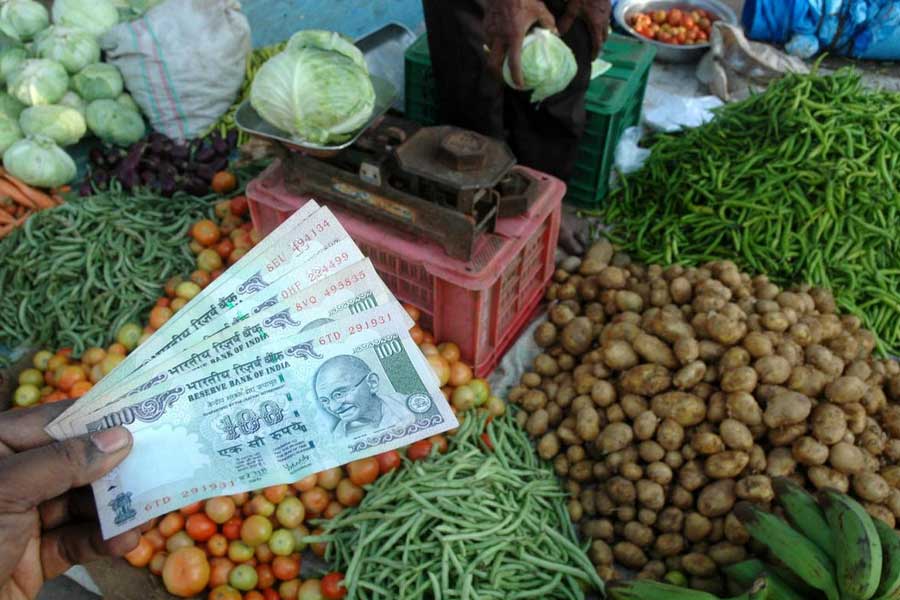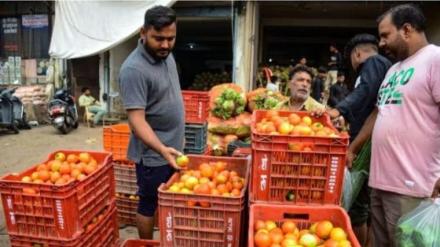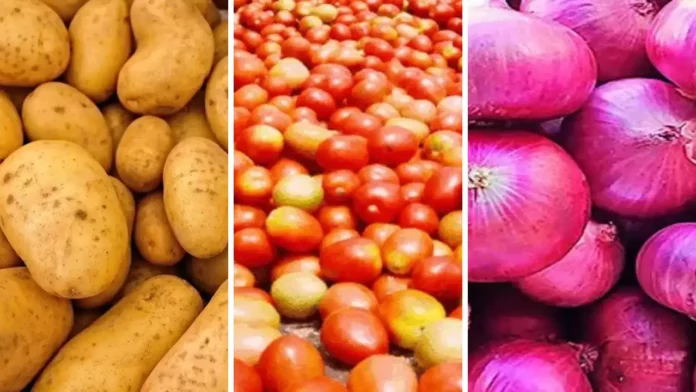Finance Secretary T.K. Pandey Identifies Five Key Commodities Responsible For Rising Inflation
At the CNBC-TV18 Global Leadership Summit, Finance Secretary Tuhin Kanta Pandey addressed India’s ongoing inflation concerns, identifying five key commodities that he believes are significantly driving the country’s inflation rates. According to Pandey, inflation in India is primarily due to price increases in just five items: tomatoes, onions, potatoes, gold, and silver. He highlighted that if the price pressures from these commodities were removed, India’s core inflation rate would stand at a more manageable 4.2%, offering a more stable economic outlook.
Pandey’s remarks come at a time when inflation has been a pressing issue for policymakers, with fluctuating commodity prices affecting both consumers and the broader economy. His insights provide a clearer understanding of the factors fueling inflation and offer a potential roadmap for targeted interventions.
The Five Inflation Drivers: Why These Commodities Matter?
The commodities identified by T.K. Pandey—tomatoes, onions, potatoes, gold, and silver—hold a unique place in India’s economy. Each of these items impacts inflation in distinct ways due to their importance in daily consumption, investment, and market value. The soaring prices of these goods have caused concern for the government, which is closely monitoring inflation trends to maintain economic stability.

- Tomatoes, Onions, and Potatoes: These staples in the Indian diet are highly sensitive to seasonal changes, supply disruptions, and weather conditions. Their prices often fluctuate due to factors such as monsoon variations, crop yield, and supply chain issues. Being essential food items, any price hike in these commodities has an immediate impact on household expenses, making them a crucial factor in consumer inflation.
- Gold and Silver: Unlike perishable goods, gold and silver represent wealth and investment value. Indians have a strong cultural affinity for these precious metals, especially during festival seasons and weddings. Global market dynamics, currency fluctuations, and economic uncertainty contribute to the rising prices of gold and silver. As safe-haven assets, these metals attract demand during inflationary times, which in turn drives up their prices and contributes to overall inflation.
Core Inflation Rate Without These Commodities: A Different Economic Picture
Pandey emphasized that without the influence of these five commodities, India’s core inflation rate would drop to around 4.2%. This figure presents a more optimistic view of the underlying inflationary pressures in the Indian economy, suggesting that the inflation rate could be contained with targeted measures. However, as these commodities are essential for both consumption and investment, controlling their prices remains a complex challenge.
Pandey’s analysis suggests that policymakers might consider targeted interventions in these specific areas to help manage inflation more effectively. For instance, improving agricultural supply chains, investing in storage facilities, and stabilizing import policies could address the volatility in food prices. On the other hand, managing gold and silver prices may require careful consideration of import duties and policies that impact the precious metals market.
Exceptional Price Movements: Understanding The Causes Of Commodity Inflation
The price volatility of these five commodities has been particularly pronounced, with exceptional movements that have impacted the broader inflation landscape. T.K. Pandey explained that the extraordinary price hikes in these areas have created a ripple effect, influencing overall consumer prices and economic stability. The causes behind these fluctuations vary, ranging from agricultural challenges and climate issues to global market factors.
For instance, the recent surge in onion and tomato prices has been attributed to poor weather conditions and crop damage, leading to supply shortages. Meanwhile, gold and silver prices are affected by global economic conditions, with increased demand for safe-haven assets due to market uncertainties. These factors make it challenging for the government to maintain price stability, requiring a multifaceted approach to tackle inflation.
Government’s Role In Addressing Inflation: Possible Policy Interventions
Pandey’s comments highlight the need for government intervention to stabilize prices in these five critical areas. By focusing on specific commodities, policymakers can adopt a more targeted approach to inflation control rather than broad, sweeping measures. For food items like tomatoes, onions, and potatoes, interventions could include improving agricultural practices, enhancing supply chain logistics, and offering subsidies to farmers to ensure stable crop production.
For gold and silver, the government could explore adjusting import tariffs or implementing policies that regulate demand, especially during peak buying seasons. Additionally, encouraging alternative investment avenues may help curb excessive demand for these precious metals, which are often seen as traditional investments in India. By promoting financial literacy and awareness, the government can guide citizens toward diversified investment portfolios, reducing the reliance on gold and silver as primary assets.

Impact On The Common Man: Rising Costs And Household Budgets
The inflationary pressures caused by these five commodities are felt acutely by Indian households, where food items and precious metals play a central role in daily life and cultural practices. The rising prices of tomatoes, onions, and potatoes have a direct impact on household budgets, forcing families to adjust their spending on essential items. Similarly, the high cost of gold and silver affects the purchasing power of individuals, especially during festive seasons and weddings.
For the average consumer, these inflationary trends translate into increased financial stress and limited disposable income. Families are forced to allocate a larger portion of their budgets toward essential commodities, leaving less room for savings and discretionary spending. This, in turn, affects overall consumer demand and economic growth, as high inflation dampens purchasing power and restricts economic activity.
Expert Opinions: Analysts Weigh In On Inflation Control Measures
Economists and financial analysts have responded to Pandey’s remarks with a range of perspectives. Some experts agree with the Finance Secretary’s identification of key inflation drivers, emphasizing the need for targeted measures in these specific areas. They argue that controlling inflation in staple food items and precious metals could provide significant relief for consumers and stabilize the economy.
However, other analysts caution that while targeted interventions may offer short-term relief, a comprehensive approach to inflation control is essential. They suggest that the government should address underlying structural issues, such as infrastructure improvements in agriculture, enhanced storage capabilities, and policies that promote diversified investment options. These measures could help reduce price volatility over the long term and create a more resilient economy.

Looking Forward: Building A Sustainable Inflation Control Strategy
As India grapples with inflationary challenges, T.K. Pandey’s insights offer a roadmap for potential solutions. By focusing on the five key commodities driving inflation, the government can develop policies that address the root causes of price fluctuations. Enhancing agricultural practices, strengthening supply chains, and implementing prudent import policies are some of the strategies that could help mitigate inflationary pressures.
While managing the prices of essential food items and precious metals is no easy task, a targeted approach may be the most effective path forward. As India moves ahead, the government’s ability to balance consumer needs with market dynamics will be crucial in building a sustainable inflation control strategy. For Indian households and the broader economy, effective inflation management will play a vital role in maintaining financial stability and promoting economic growth.

